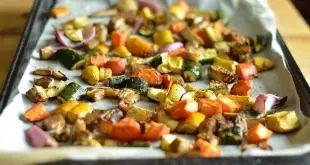Carbs and Fiber: YOU do the math…
You ever notice we WLS folk have NO problem talking about poo? Seriously. It’s an acceptable topic of conversation no matter where you are or what you are doing. So long as you are talking to other post-ops that is. It can (and has been) even discussed around the dinner table.
Why are we so obsessed with poo? Mainly because it is sort of a luxury to be “regular” post-op. I am proud to say that I am and I credit that mainly to the fact that I make sure to get adequate fiber every day.
Dietary Fiber
This is the term you’ll see on food packages. But what is Fiber? Again, we turn to our friends at Wikipedia:
“Dietary fiber or Dietary fibre or sometimes roughage is the indigestible portion of plant foods having two main components:
- soluble (prebiotic, viscous) fiber that is readily fermented in the colon into gases and physiologically active byproducts, and
- insoluble fiber that is metabolically inert, absorbing water throughout the digestive system and easing defecation.”
Here’s what’s important to you. Dietary fiber is found in carbohydrates. Since our bodies cannot digest dietary fiber, it cannot be turned into glucose or glycogen or converted into fat.
Because of all this, there is a piece of terminology that I am sure you all are familiar with: net carbs. When looking at a food label, you’ll see the total amount of carbohydrates. Then, under that, there’s the amount of fiber, sugar, etc. The net carbs are the total number of carbohydrates grams minus the total number of dietary fiber grams. So if a food has 20g of total carbohydrates and 2g of dietary fiber, the net carbs would be 18g of carbohydrates.
The American Dietary Association recommends we get at least 25g of fiber every day. Why? Look at bullet point #2 above. Fiber absorbs water in the digestive system and sort of “scrubs out” the intestines, carrying out waste (poo). You like to poo? Eat your fiber!
Now, in order to get your fiber you have to take in carbohydrates, this goes without saying. The trick, then, is choosing the right foods to get a good balance of carbohydrates and other nutrients. Fresh fruits and veggies (when you are cleared for them) are obviously a good choice. And there are many grain products that give good fiber (100% whole wheat bread, quinoa, etc.). Beans are also an excellent source of fiber (hence the popular school rhyme. You know the one…”Beans, beans…good for the heart. The more you eat the more you…” well you get the point.)
Fiber Supplements
Because of the reduced amount of food we can eat post-op, it might be necessary for some of us to use fiber supplements (much in the way that we use protein supplements) to get some of our fiber. I just want to highlight that there’s nothing wrong with that (or nothing that I could find wrong with it). Fiber supplements tend to be low calorie and if they have any more carbs than the fiber they give, it’s usually very little.
Having said that, as you get further out from surgery, the other benefits of fiber (satiety and regulation of blood sugar) may prompt you to find more ways to get fiber from your food.
I’ve said it several times before but it bears repeating: you cannot get fiber without consuming carbohydrates. You NEED fiber for several purposes (some that I’ve outlined and others that I have not). Therefore, it stands to reason that you HAVE to eat some carbohydrates (and preferably ones that are good sources of fiber) in order to maintain the proper intake of…fiber!
The food industry and whole grain products
Food companies are notorious for trying to confuse us with packaging. There are some phrases that are meant to make you think you are getting a lot of fiber when may not be.
For instance, when a package says “5g of whole grains per serving.” That isn’t the same as fiber. That 5g of whole grains might only have 2g of fiber. While it’s great that the product is made with whole grains, you really do need to check the nutrition label to get a complete picture of what you are eating.
Also beware of bread packaging. Some loaves of bread will simply say “wheat bread” while some say “100% whole wheat.” Some might even say “enriched wheat bread.” These have very distinct meanings and those meanings do impact you.
So what does this all mean and how can you tell what you’re getting?
If you see a package that simply says “wheat bread” or “enriched wheat bread,” go straight to the nutrition information and look at the ingredients list. If whole wheat flour is not listed, what you probably have is white bread with some wheat germ added for the lovely brown color.
If a package says 100% whole wheat bread, you are probably getting bread that really was made with whole wheat flour, but it’s good to check the label just to make sure.
This is a lot of information, we know. But it’s important! So about fiber, here’s the breakdown of what you should know:
- Dietary fiber can only be found in carbohydrates, therefore you have to eat carbohydrates to get them
- Our bodies can’t digest fiber and can’t convert them into glucose or glycogen or fat for energy storage
- Our bodies CAN use dietary fiber to clean out our digestive systems and for excretion (poo-ing)
- Because dietary fiber can’t be digested, the amount of dietary fiber in food does not count toward the net amount of carbohydrates in the food we eat
- The American Dietary Association recommends healthy people get at least 25g of fiber a day for good health
- Vegetables, whole grains and beans are all excellent sources of fiber
- Beware the packaging on bread products that say whole wheat. Always look at the ingredients to make sure that whole wheat flour is used.
 Bariatric Foodie Play with your food
Bariatric Foodie Play with your food




